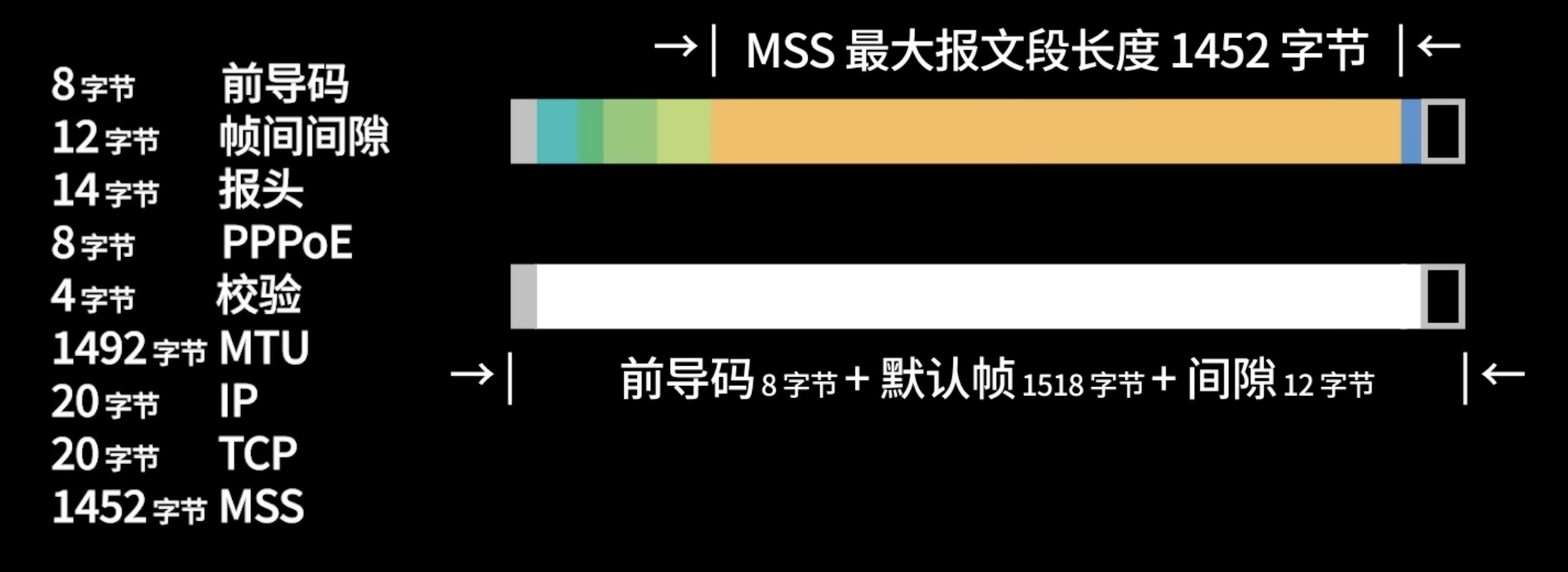Abstract
- A CSMA
- A Computer Network created with a single physical cable that connects multiple computers to enable intercommunication
Ethernet Frame


- Each Ethernet frame has 1518 Byte and it comes with 20 bytes of external metadata and 66 bytes of internal meta data. So the actual data delivered is 94.41%. That is why you don’t get full 1000Gbps when running network benchmark, it isn’t mainly due to data loss, it is mainly due to extra Bandwidth used for all the external and internal metadata
MTU Frame Size: Balancing Throughput and Latency
For the Maximum Transmission Unit (MTU), we divide data into frames. If latency requirements are low and we want to maximise data throughput, we use larger frames. Larger frames mean more data per frame and less relative overhead, typically around 1500 bytes. Speed tests often use this approach.
However, if low latency is crucial for sending data as quickly as possible, we opt for smaller frames. This means accepting a higher relative overhead in exchange for sending smaller amounts of data more frequently, typically around 64 bytes. Games often use this approach, as real-time interaction is the top priority and the data sent (mostly user actions) is small.
